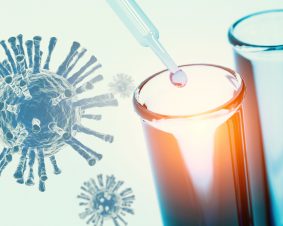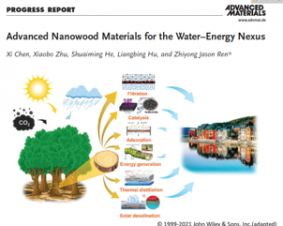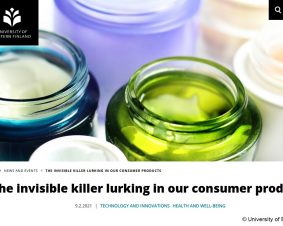 >
Spotlight June 2023: New catalytic process for recovering important materials from composites in a single process
>
Spotlight June 2023: New catalytic process for recovering important materials from composites in a single process
Previously virtually impossible and a huge problem: fibre-reinforced resin composites (epoxides) were not recyclable, and wind turbine rotor blades, for example, add up to a waste pile of 43 million tons by 2050. Researchers have now taken an important first step in “reprocessing” these composites and catalytically dissolving them so that the carbon fibres and resin ingredients can be separated without harming the materials. The process is not limited to rotor blades but can be applied to all composite materials. Particularly, because of the recovery of the expensive carbon fibres, this method is worthy of attention and leads to a better circular economy, thus, to improved sustainability.
Composite materials based on synthetic resins, usually reinforced with carbon fibres, are designed for long durability and are therefore fundamentally difficult to degrade. Until now, they have been stored as waste in landfills and thus removed from the cycle of materials.
Scientists at Aarhus University and the Danish Technological Institute have now filed a patent application for a process that, based on a catalyst containing ruthenium and various solvents, can break down the epoxy matrix and expose the carbon fibres without damaging them. The ingredients bisphenol A and the glass or carbon fibres are recovered and can be reused.
However, ruthenium is a rare and expensive metal, and the efficiency of the process has not yet been scaled-up to industrial level, but it is more than a glimmer of hope on the road to full recovery of the highly stable composites.
Original publication:
Ahrens, A et al. (2023). Catalytic disconnection of C-O bonds in epoxy resins and composites. Nature, 617, 730–737

Weitere Spotlights
Spotlight March 2021: Is Nanotechnology the Swiss Army Knife against Future Pandemics?
The COVID 19 outbreak has led to a fundamental rethinking of existing approaches to diagnosis, treatment, and prevention methods. The need for better and more efficient concepts is global and urgent. Nanotechnology has long been at the forefront of innovation and has led to advances in many different disciplines. Could this interdisciplinary field help develop […]
Read moreSpotlight November 2023: Early Awareness and Action System for Advanced Materials (Early4AdMa)
Advanced materials hold immense potential to address global challenges such as environmental degradation, transformation of the energy sector, and development towards circularity. To harness their benefits while ensuring safety and sustainability, regulatory bodies, scientific communities, and industries have recognized the need for proactive approaches. The “Early4AdMa” system is a pre-regulatory risk governance tool for advanced […]
Read moreSpotlight September 2021: Wood, the raw material of the future?
One of the greatest challenges facing humanity is to produce clean drinking water under the given circumstances of global warming, population growth and increasing littering. In September, we would like to present a review article that believes one approach to solve this problem is the use of nanoscale wood. In the review, “Advanced Nanowood Materials […]
Read moreSpotlight April 2021: Nanomaterials and Fake News – a commentary based on an example
In February 2021, the article “The invisible killer lurking in our consumer products” appeared, describing nanoparticles as a greater danger than Corona [1]. “The use of nanomaterials” would be “unregulated” and “nanomaterials are so small that they cannot be determined once they are part of a product”. So what is the truth of these statements? […]
Read more


